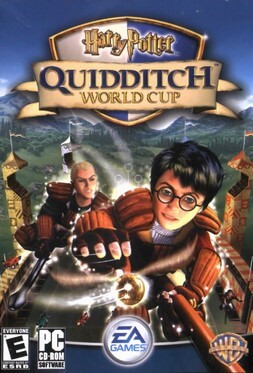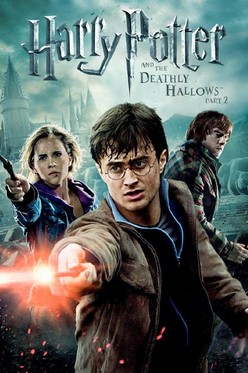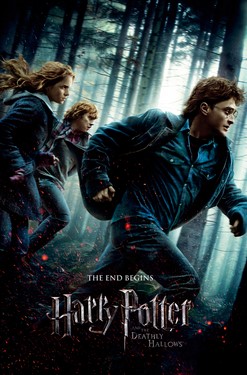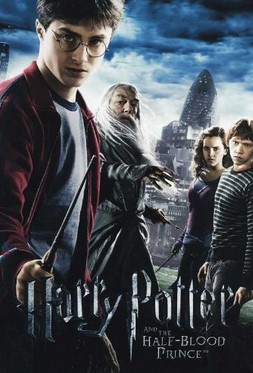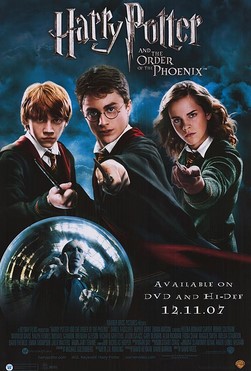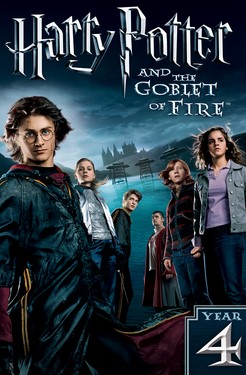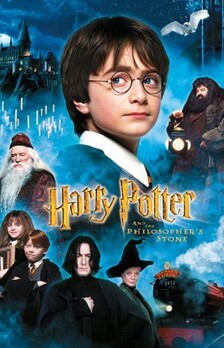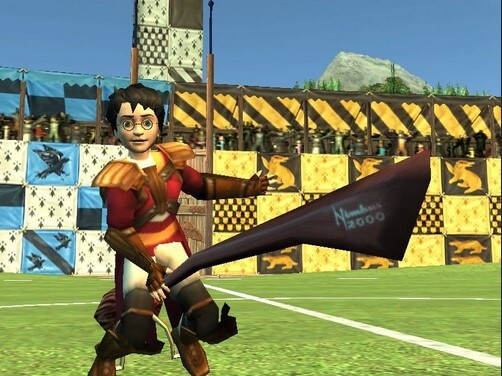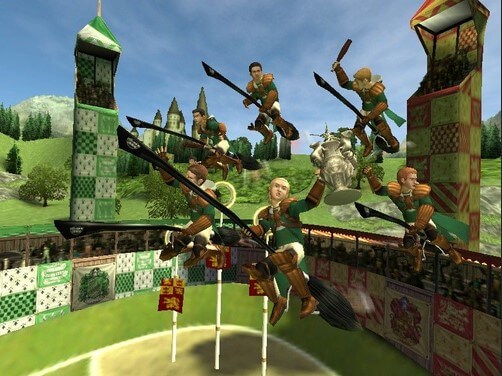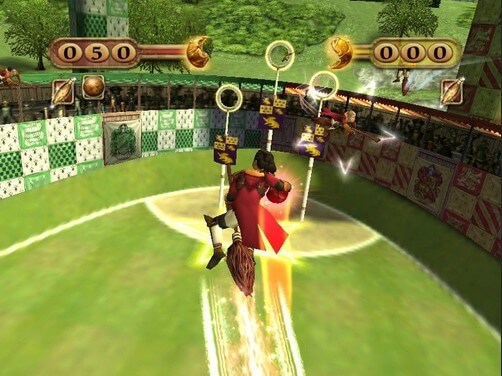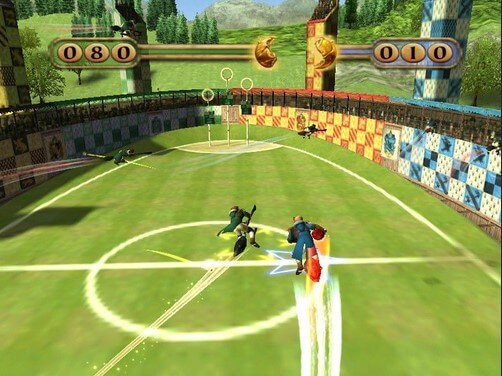Harry Potter: Quidditch World Cup is a 2003 sports action video game that features the fictional sport of Quidditch from J. K. Rowling's Harry Potter franchise, using the likeness from the films. The user plays in the Hogwarts Quidditch Cup competition.
Characters/Teams
Hogwarts House team rosters are based on Harry's third year (Prisoner of Azkaban). Other House team and national team members not named in the books are named in this game, and their names are also listed on Chocolate Frog cards in the Half-Blood Prince video game.
As in the first three books, Lee Jordan returns as play-by-play commentator for the House Quidditch Cup matches, but unique to this game, Harry and Ron's dorm-mate Seamus Finnegan joins as color commentator. Meanwhile, Ludo Bagman returns as play-by-play commentator for international matches, with a set of color commentators. Other characters make appearances in the stands and elsewhere, such as Hermione Granger, Ron Weasley, Rolanda Hooch and Albus Dumbledore.
Gameplay
Hogwarts
In this stage, the player competes for the Hogwarts Inter-House Quidditch Cup using one of the Hogwarts house teams – Gryffindor, Ravenclaw, Hufflepuff, or Slytherin. Each House team is represented by its Seeker, and each Seeker is a specific character from the books (Harry Potter for Gryffindor, Draco Malfoy for Slytherin, Cedric Diggory for Hufflepuff, and Cho Chang for Ravenclaw). When the player chooses a team, the Seeker of the chosen House flies off on his or her broomstick. If this is the player's first time playing a team, the character will give a short statement praising the player's selection, then the house challenges appear. These challenges focus on specific areas of a full Quidditch game and are used to learn the game for new players, or polish skills as a returning player.
There are six House challenges: Passing, Tackle and Shoot, Seeker, Beaters and Bludgers, Special Moves, and Combos. Each is led by a relevant player – for example, Harry leads the Gryffindor Seeker challenge, while Angelina Johnson leads the Gryffindor Passing challenge and Oliver Wood leads the Gryffindor Combo challenge. Only the first three challenges - Passing, Tackle and Shoot, and Seeker - are initially available to the player, with Beaters and Bludgers, and Special Moves unlocked after the first Quidditch match, and Combos unlocked after the second match. Completing the first set of challenges allows the player to play their first full Quidditch match. The team the player faces depends on what team they are playing as. Winning the game unlocks the next set of challenges which must then be completed to unlock the next match. Winning the second game unlocks the final challenge. Completing that challenge unlocks the Hogwarts Quidditch Cup final match.
During a Quidditch match, the player controls the Chasers who try and score goals with the Quaffle to earn 10 points per goal. The Chasers' abilities depend on which challenges have been completed (for a first time player) (Example: in the player's first game, he will be unable to perform special moves or combo moves). Abilities also unlock by collecting certain Quidditch cards. These cards are earned by doing certain tasks, such as winning without conceding a goal or performing a certain number of steals in a game. Along the top of the screen, each team's score display also features a thin bar with one half of the Golden Snitch. Actions performed in game by the Chasers such as any successful pass increase the bar slightly, and performing a successful string of combo passes and shots can increase the bar by an amount proportional to the length of the combo string, up to seven actions. The player can continue to chain actions to the combo but the counter will not go past 7. The bar will increase until both halves join.
The Chasers can also perform moves to drain the opposing team's bar such as successfully hitting the opposing chasers with a Bludger, performing a successful Special Move tackle, or performing a Team Special Move (which is unblockable). Every team in the game has a unique Team Special Move that triggers a short cinematic of spectacular teamwork between the team Chasers (and sometimes Beaters) and has a possibility of scoring multiple goals. For example, The Ravenclaw Team Special Move, the Burdish of Raven, scores three times for 30 points total – something no other Team Special Move, even those of the national teams, does. Although the original Quidditch rule disallows having more than 2 chasers in the scoring area at the same time (known as Stooging, as stated in Quidditch Through the Ages), doing such behaviour in this game will not result in penalty.
Once both halves of the Snitch join, the game moves into the Snitch Chase, regardless of score (it is possible, though unlikely, to engage in the Snitch Chase with the score at 0-0). During the Snitch Chase, the player now controls the Seeker and follows the Snitch, in a race against the opposing seeker to catch it. The player can use a speed boost which drains a boost bar directly proportional to the size of the snitch bar accumulated during the Chaser portion of the game. If a player doesn't have a boost bar of maximum size, staying in the Snitch's slipstream (which normally refills the bar) with his bar filled will increase its size. Using the boost, once the player is close enough, he can try to grab the Snitch. If he is successful, he earns 150 points for his team and the match ends. This typically wins the match but is not always the case (example, if the player's team is trailing by 160 points, catching the snitch would end the match but the player would still lose). The Cup is based on points, not wins, so high scoring teams have a better chance at winning, and the team with the highest point total after all three games have been played wins the Cup. Winning the Cup with any team unlocks the Quidditch World Cup.
